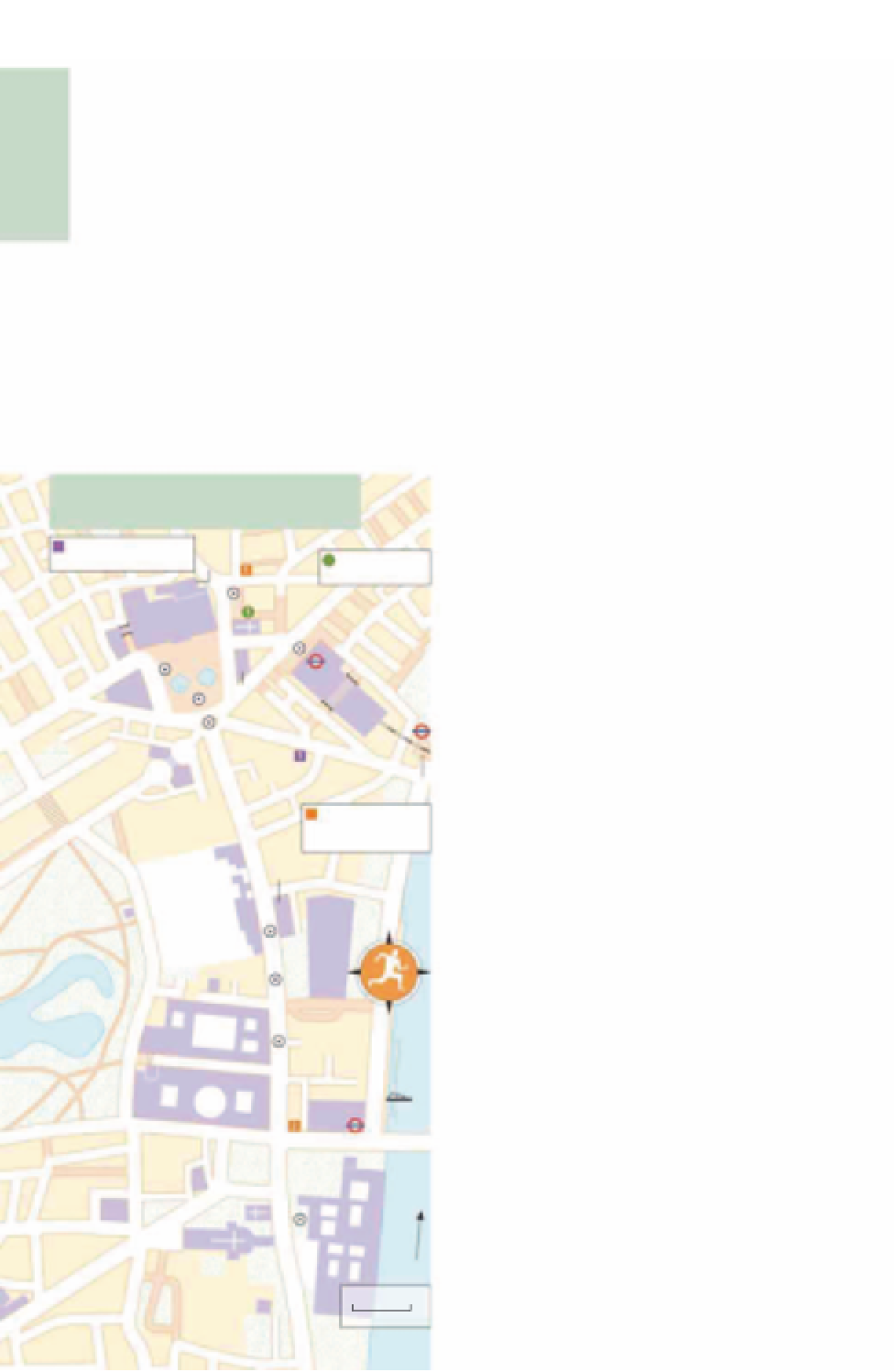Travel Reference
In-Depth Information
1
room 22. Centre stage, in room 21, is a comical statue of
Victoria and Albert
in
Anglo-Saxon garb. The best place to head for is room 24, which contains a deteriorated
portrait of the
Brontë sisters
as seen by their disturbed brother Branwell; you can still
see where he painted himself out, leaving a ghostly blur between Charlotte and Emily.
Nearby are the poetic duo,
Robert
and
Elizabeth Barrett Browning
, looking totally
Gothic in their grim Victorian dress.
In room 28, it's impossible to miss the striking Edwardian portrait of
Lady Colin
Campbell
, posing in a luxuriant black silk dress. Finally, in room 29, there are some
excellent
John Singer Sargent
portraits, and several works by students of the Slade:
Augustus John
, looking very confident and dapper at the age of just 22, his sister, Gwen
John,
Walter Sickert
(by Philip Wilson Steer) and Steer (by Sickert). Steer founded the
New English Arts Club, at which the last two portraits were originally exhibited.
The twentieth century and beyond
he
twentieth-century
collection begins in room 30, with Sargent's group portrait of
the upper-crust generals responsible for the slaughter of World War I. The interwar
years are then generously covered in room
31. The faces on display here are frequently
rotated, but look out for Sickert's excellent
small, smouldering portrait of
Churchill
,
Augustus John's portrayal of a ruby-lipped
Dylan Thomas, Ben Nicolson's double
portrait of himself and Barbara Hepworth
and a whole host of works by, or depicting,
the
Bloomsbury Group
.
Out on the Balcony Gallery, there's a
who's who (or was who) of
Britain 1960-90
.
Even here, amid the photos of the Swinging
Sixties, there are quite a few genuine works
of art by the likes of Leon Kossoff, R.B.
Kitaj, Lucien Freud and Francis Bacon. The
Contemporary Galleries
occupy the ground
floor,
and
are a constantly changing,
unashamedly populist trot through the
media personalities of the last decade or so.
As well as a host of photo portraits, you can
sample such delights as Michael Craig
Martin's LCD portrait of architect Zaha
Hadid, or the cartoon-like quadruple
portrait of pop band Blur by Julian Opie.
TRAFALGAR SQUARE
& WHITEHALL
National
Portrait
Gallery
ACCOMMODATION
Northumberland House
CAFÉ
Café in the Crypt
1
1
W I L L I A M I
V S
T
S
T
St Martin-
in-the-
Fields
Edith
Cavell
National
Gallery
Sainsbury
Wing
D UN
CA N N O N S T
Fourth
Plinth
Charing
Cross
TRAFALGAR
SQUARE
Charing
Cross
Victoria
Embankment
Gardens
Canada
House
South
Africa
House
Nelson's
Column
Charles I
Embankment
Admiralty
Arch
HUNGERFORD
BRIDGE
PUBS & BARS
The Chandos
St Stephen's Tavern
1
2
Household
Cavalry
Museum
Banqueting
House
HORSE
GUARDS
PARADE
Horse
Guards
Guards'
Memorial
N
Ministry of
Defence
St James's
Park
Haig
10
Downing St
Duck
Island
Women
of WWII
C
Foreign &
Commonwealth
O
ce
Whitehall
Whitehall
, the unusually broad avenue
connecting Trafalgar Square to Parliament
Square, is synonymous with the faceless,
pinstriped bureaucracy charged with the
day-to-day running of the country. Yet
during the sixteenth and seventeenth
centuries, it was, in fact, the site of the
chief royal residence in London.
Whitehall
Palace
started out as the London seat of the
Archbishop of York, but was confiscated
and enlarged by Henry VIII after a fire at
Cenotaph
Westminster
Pier
Churchill
War Rooms
HM Treasury
Portcullis
House
Westminster
W A L K
Supreme
Court
PARLIAMENT
SQUARE
Big Ben
St Margaret's
Central
Hall
Cromwell
T
Houses of
Parliament
Westminster
Abbey
Jewel
To we r
DEAN'S
YARD
0
100
yards
Y O RC H A R D S T
































































